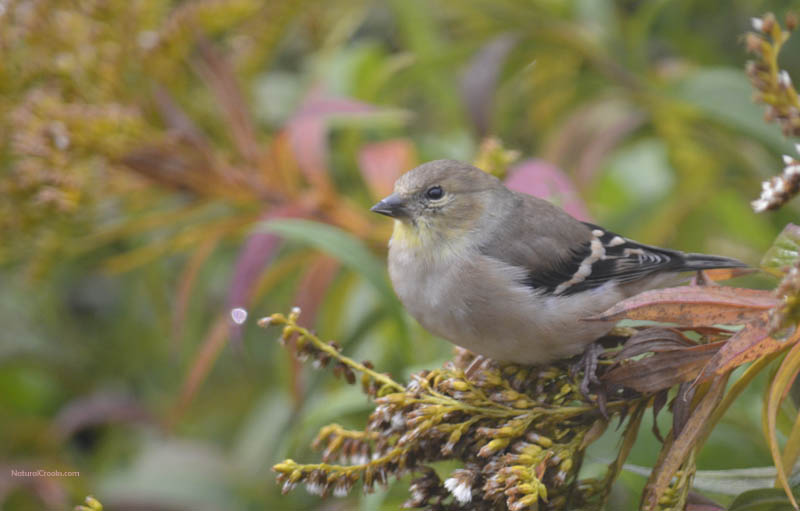What can add gorgeous golden colour and vibrant fall red leaves to a thick clay, fairly heavily shaded natural garden in southern Ontario? Goldenrod. And if you have enough feathered friends about, you may not even have to plant it yourself.
American Goldfinch on Goldenrod
Even after the thick sprays of brilliant blossoms have faded, the goldenrod can still bring beauty to your garden. Here an American Goldfinch perches on a sodden flower stalk in the misty rain. I’m not convinced the bird was eating the seeds. I think it was nibbling on the black eyed susan seeds nearby.
You can see some of the pinks and reds as the goldenrod foliage turns with the shorter, dimmer autumn days.
Rapid Roots Let Goldenrod Spread
Goldenrod spreads quickly by sending sturdy thick roots running just under the surface of the soil. So if you do add a clump to your garden, keep an eye on it. It’s fairly easy to tug the entire stems up and away. They snap off at ground level. But to actually get rid of golden rod, you’ll have to dig up those persistent roots.
Goldenrod Allergies
Many, many, many people have tried to explain that goldenrod pollen is too heavy to float in the air and cause allergies. Apparently, it’s unobtrusive ragweed blooming discretely nearby that actually triggers hayfever attacks. However, allergy sufferers generally refuse to be convinced. Sometime I’d love to do a blindfolded test on so-called “goldenrod” allergy sufferers. But I haven’t actually met any yet to try it with.
Join In
Does your yard sport a clump of yellow fire? Or are you one of the mysterious allergy sufferers who refuses to go near the stuff? Please share your experiences with goldenrod by posting a comment.

